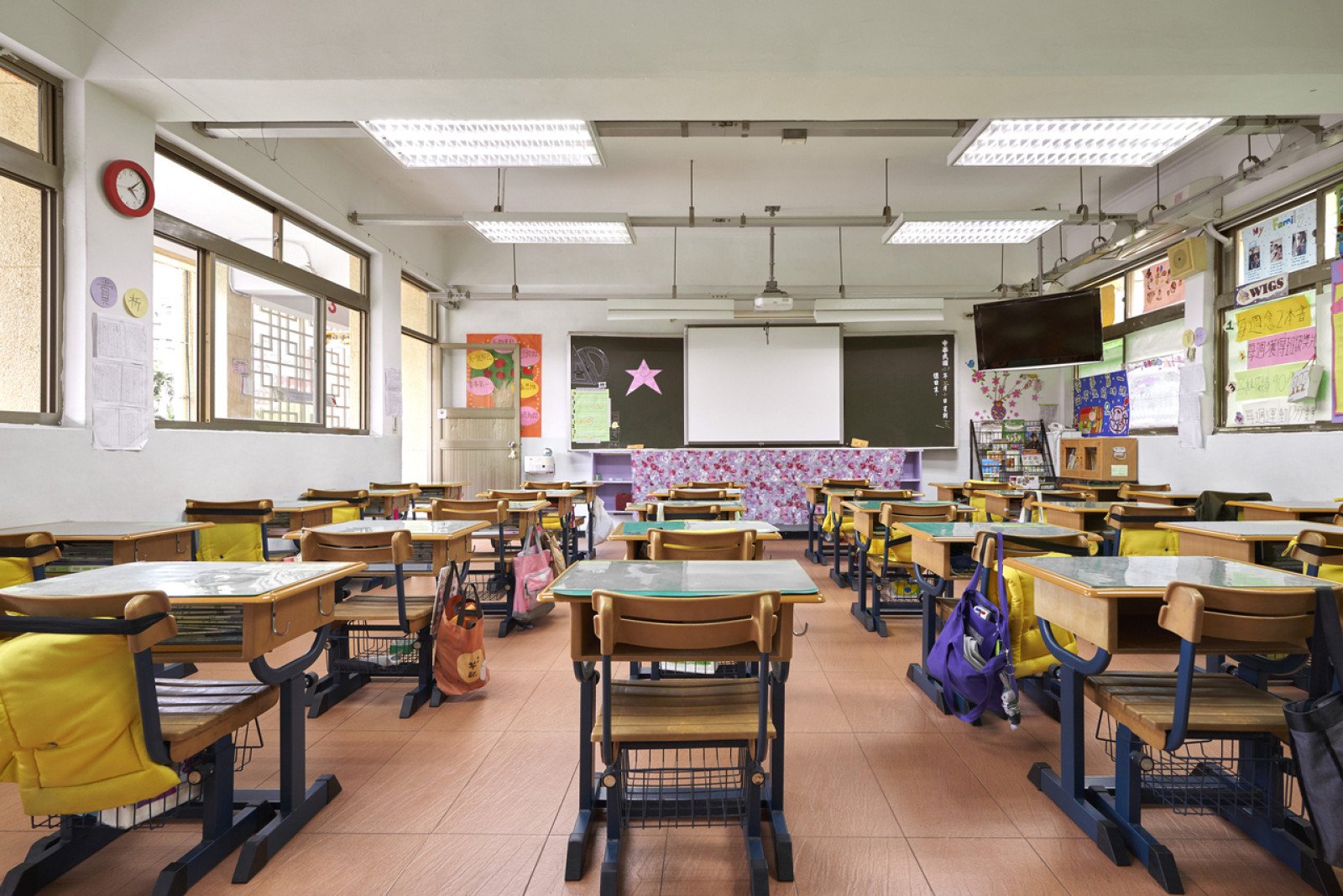School energy investigation
Investigate energy use at school and come up with ways to reduce electricity use and combat climate change.

Overview
How can your school use less energy? Investigate how the school uses energy and come up with recommendations to reduce the impact on climate change.
Instructions
What you'll need
- One of the following handouts per student:
- "Energy survey"
- "Lighting investigation"
- "Computer investigation"
- "Windows/doors investigation"
- "Energy interview"
- Small stickers for dotmocracy – enough for three per student
- "Working together" group assessment – one per group
Before leading the activity, decide which energy investigations to use. Five different investigations are provided for students to learn more about energy conservation behaviours and energy-efficient technologies at school:
- "Energy survey"
- "Lighting investigation"
- "Computer investigation"
- "Windows/doors investigation"
- "Energy interview"
See Teaching notes for more information.
Investigate
- Introduce the idea that our energy use impacts the environment and affects climate change.
- In B.C., most electricity comes from a clean energy source: water.
- Many other energy needs such as heating, cooling and transportation use fossil fuels, releasing greenhouse gases in the atmosphere.
- Ask students to share ideas for how they think they can use less energy and reduce our greenhouse gas emissions at school.
- Record ideas on the board, chart paper or computer to refer to later.
- In order to come up with the most effective recommendations, students need to first investigate how energy is being used at school.
- Divide the class into small groups.
- Use the investigations provided or have students create their own.
- Discuss appropriate behaviour and safety guidelines while doing investigations.
- Circulate and review the investigations to make sure each group understands what they need to do.
- "Energy survey": Review the questions with students and discuss how each one relates to energy use. Some questions are more directly related to energy (lights, transportation) and others are indirect (recycling, water bottle).
- "Lighting investigation": Your school may or may not have occupancy sensors in classrooms. Occupancy sensors automatically turn off lights when they sense no movement after a period of time. Students record if there are sensors and/or if lights are off in empty rooms. Talk about using natural light when possible instead of lights.
- "Computers investigation": Your school may or may not have automatic settings to turn computers/screens on and off.
- "Windows/doors investigation": If heating or cooling systems are on in the school, open windows and doors allow air to escape and means more energy is required to heat or cool the school.
- "Energy interview": decide which questions to ask in the interview. Remind students to speak clearly, listen carefully, take notes and look at people when they’re talking to them.
- Have students complete their investigations.
Analyze
- We can use less energy and reduce our greenhouse gas emissions at school by changing our behaviours and using energy-efficient technologies.
- In their groups, have students look at the information and data they collected and answer the questions on their investigation forms.
- Ask some of the following questions to the class. Students can discuss ideas in their investigation groups before sharing as a class.
- What did they learn about how people use energy at school?
- What did they learn about energy-efficient technologies at school?
- Can they see evidence that the school is saving energy?
- Were there questions they wish they had asked? Others they would not ask again.
- Can they think of ways to save energy to reduce our impact on climate change?
Recommend
- Based on the results of their investigations and class discussion, have students brainstorm a list of recommendations for ways to save energy and reduce greenhouse gas emissions on the back of their investigation forms or other piece of paper.
- Students identify their top three recommendations to reduce greenhouse gas emissions and the school’s impact on climate change.
- Have each investigation group share their top three recommendations and write them on the board or a piece of chart paper.
- Review and discuss each of the recommendations and how it reduces our impact on climate change.
- Have students vote on which recommendations they think the school should consider to reduce energy use using dotmocracy:
- Give each student three stickers.
- Students place stickers beside the recommendations they like the most or they think will have the biggest impact on saving energy.
- They may place all their stickers beside one recommendation or multiple recommendations if they like more than one idea.
- Once all stickers have been placed, review the recommendations again and discuss those with the most stickers.
- Take a picture of the list and stickers and share it with the principal.
- Optional: Have students reflect on their group work using the "Working together" group assessment.
Modify or extend this activity
Review the list of recommendations and follow up with one of the following ideas:
- Create a skit to present at an assembly, promoting energy-saving actions.
- Visit younger students and teach them about saving energy.
- Graph school’s energy use and update it monthly.
- Have a door decorating contest with an energy conservation theme.
- Write newsletter articles, PA announcements, or design brochures with energy-saving tips.
- Hold a “Lights out” day once a week to turn off lights in the classroom at lunch.
- Invite the principal or school district facilities to present to the class about energy use at school and sustainability goals/plans.
Curriculum Fit
Grade 7 Science
Big idea
- Earth and its climate have changed over geological time.
Content
- Evidence of climate change over geological time and the recent impact of humans
Curricular competencies
Planning and conducting
- Collaboratively plan a range of investigation types, including field work and experiments, to answer their questions or solve problems they have identified
- Observe, measure, and record data (qualitative and quantitative), using equipment, including digital technologies, with accuracy and precision
Evaluating
- Reflect on their investigation methods, including the adequacy of controls on variables (dependent and independent) and the quality of the data collected
- Consider social, ethical, and environmental implications of the findings from their own and others’ investigations
Applying and innovating
- Contribute to care for self, others, community and world through personal and collaborative approaches
- Co-operatively design projects
- Generate and introduce new or refined ideas when problem solving
Communicating
- Communicate ideas, findings and solutions to problems using digital technologies as appropriate
- Express and reflect on a variety of experiences and perspectives of place
Assessments
- Assess student participation in small group work and during the investigations.
- Collect and assess investigations and worksheets.
- Assess students’ communication skills in small group work and classroom discussions.
Teaching Notes
The "Energy survey" can be assigned to pairs of students. They’ll ask other students and teachers questions about their energy conservation behaviour. Students may modify the questions or develop their own survey to focus on the specific energy use behaviours they’re most interested in.
The "Lighting investigation", "Computer investigation" and "Windows/doors investigation" can be assigned to small groups. Students investigate energy use behaviours and energy-efficient technologies at school at times when most people aren’t in the school (before school, recesses, after school). Assign different groups to different parts of the school to collect the data. Students may modify the investigations or create their own. School districts around the province are upgrading their lighting, computers and windows to be more energy-efficient.
The "Energy interview" can be assigned to a small group of students or you may invite the principal, energy manager or other facilities member to come to the class to answer the questions. A number of questions are provided. Students may ask all the questions, some of them or develop their own list of questions to ask.
Let other teachers know about the investigations and schedule them at a time to minimize interruptions to others.
Energy conservation
Energy conservation means using less energy by changing behaviours. Students will come up with many ideas and recommendations to save energy at school. Some Power Smart tips include:
- Turn off lights when they’re not needed.
- Use natural light. Open the blinds and turn off the lights.
- Turn off water when washing hands.
- Unplug electronics when not being used.
- Turn down the heat and put on a sweater if you can.
- Use both sides of the paper. It takes a lot of resources to make paper.
Energy-efficiency
Energy-efficiency refers to technologies that help complete a task with less energy. Innovation continues to develop new and creative ways to reduce our energy use through technology.
- ENERGY STAR® is a symbol that is internationally recognized to indicate high efficiency. It’s a rating program that includes homes, buildings and appliances such as refrigerators, dishwashers, computers, furnaces, heat pumps, etc.
- Heat pumps are an efficient form of heating and cooling by electricity that moves heat from one place to another. There are both air source heat pumps (moves the heat from outside to inside) and ground source heat pumps (moves heat from the ground).
- Automatic controls for lighting and heating.
- Energy-efficient light bulbs.
- Weather-stripping and fixing air leaks around doors and windows.
CleanBC is a provincial plan for a cleaner, more renewable and sustainable future. The Better Buildings program focuses on making buildings more energy-efficient and offers incentives for energy-efficient products and renovations that save energy and help reduce greenhouse gas emissions.
- Learn about the building code, net-zero buildings, heat pumps and renewable gas that make buildings more energy efficient.







